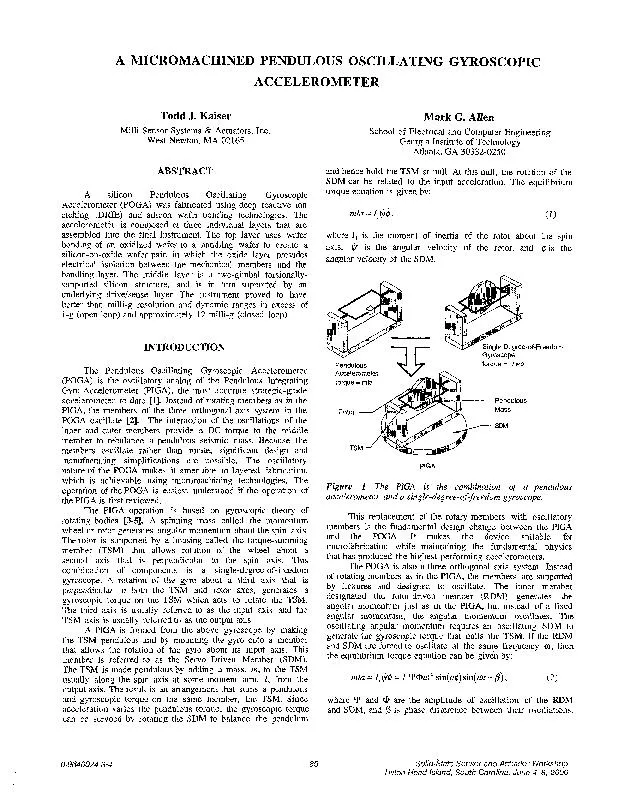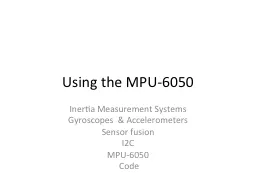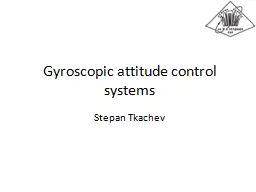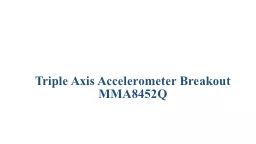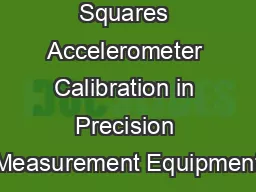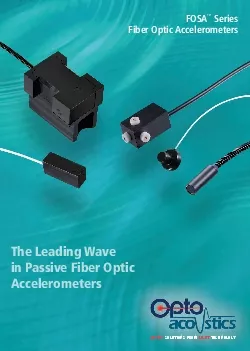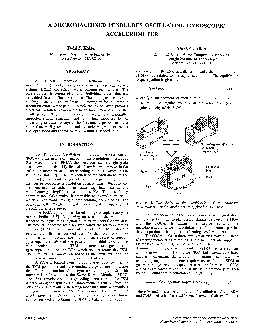PDF-A MICROMACHINED PENDULOUS OSCILLATING GYROSCOPIC ACCELEROMETER ...
Author : briana-ranney | Published Date : 2016-07-07
Todd J Kaiser Mark G Allen Milli Sensor Systems Actuators Inc West Newton MA 02165 School of Electrical and Computer Engineering Georgia Institute of Technology
Presentation Embed Code
Download Presentation
Download Presentation The PPT/PDF document "A MICROMACHINED PENDULOUS OSCILLATING GY..." is the property of its rightful owner. Permission is granted to download and print the materials on this website for personal, non-commercial use only, and to display it on your personal computer provided you do not modify the materials and that you retain all copyright notices contained in the materials. By downloading content from our website, you accept the terms of this agreement.
A MICROMACHINED PENDULOUS OSCILLATING GYROSCOPIC ACCELEROMETER ...: Transcript
Download Rules Of Document
"A MICROMACHINED PENDULOUS OSCILLATING GYROSCOPIC ACCELEROMETER
..."The content belongs to its owner. You may download and print it for personal use, without modification, and keep all copyright notices. By downloading, you agree to these terms.
Related Documents

